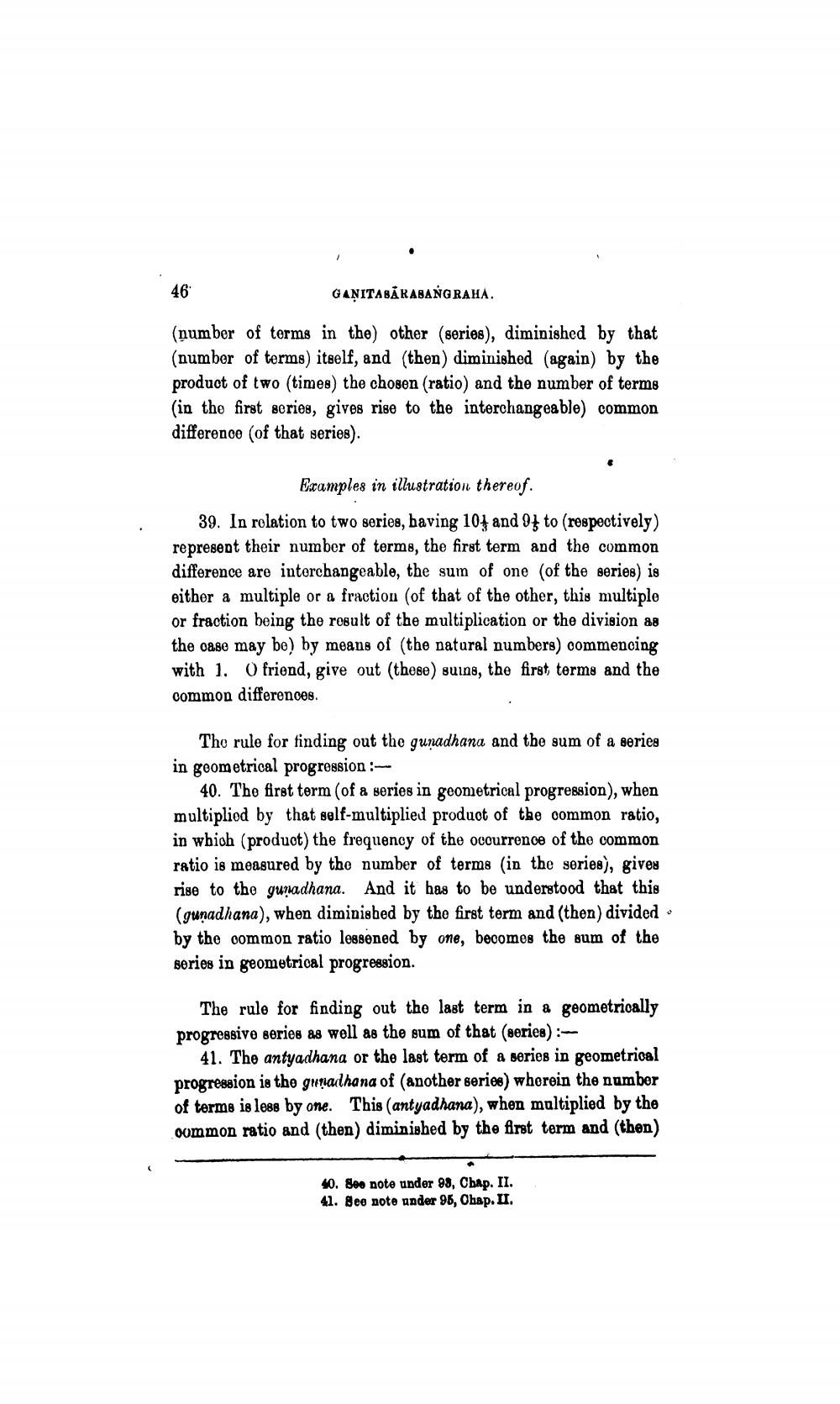________________
46
GANITABĀRABANGRAHA.
(number of terms in the other (series), diminished by that (number of terms) itself, and (then) diminished (again) by the product of two times) the chosen (ratio) and the number of terms
in the first series, gives rise to the interchangeable) common difference (of that series).
Examples in illustration thereof.
39. In relation to two series, baving 101 and 0} to (respectively) represent their number of terms, the first term and the common difference are interchangeable, the sum of one of the series) is either a multiple or a fraction (of that of the other, this multiple or fraction being the result of the multiplication or the division as the case may be) by means of (the natural numbers) commencing with 1. O friend, give out (these) suins, the first terms and the common differences
The rule for finding out the gunadhana and the sum of a series in geometrical progression :
40. The first term of a series in geometrical progression), when multiplied by that self-multiplied produot of the common ratio, in which (product) the frequency of the occurrence of the common ratio is measured by the number of terms (in the series), gives rise to the gunadhana. And it has to be understood that this (gunadhana), when diminished by the first term and (then) divided - by the common ratio lessoned by one, becomes the sum of the series in geometrical progression.
The rule for finding out the last term in a geometrically progressive series as well as the sum of that (series) :
41. The antyadhana or the last term of a series in geometrical progression is the gumalhana of (another series) wherein the number of terms is less by one. This (antyadhana), when multiplied by the common ratio and (then) diminished by the first term and (then)
40. Soo note under 98, Chap. II. 41. Bee note under 95, Chap. II.




